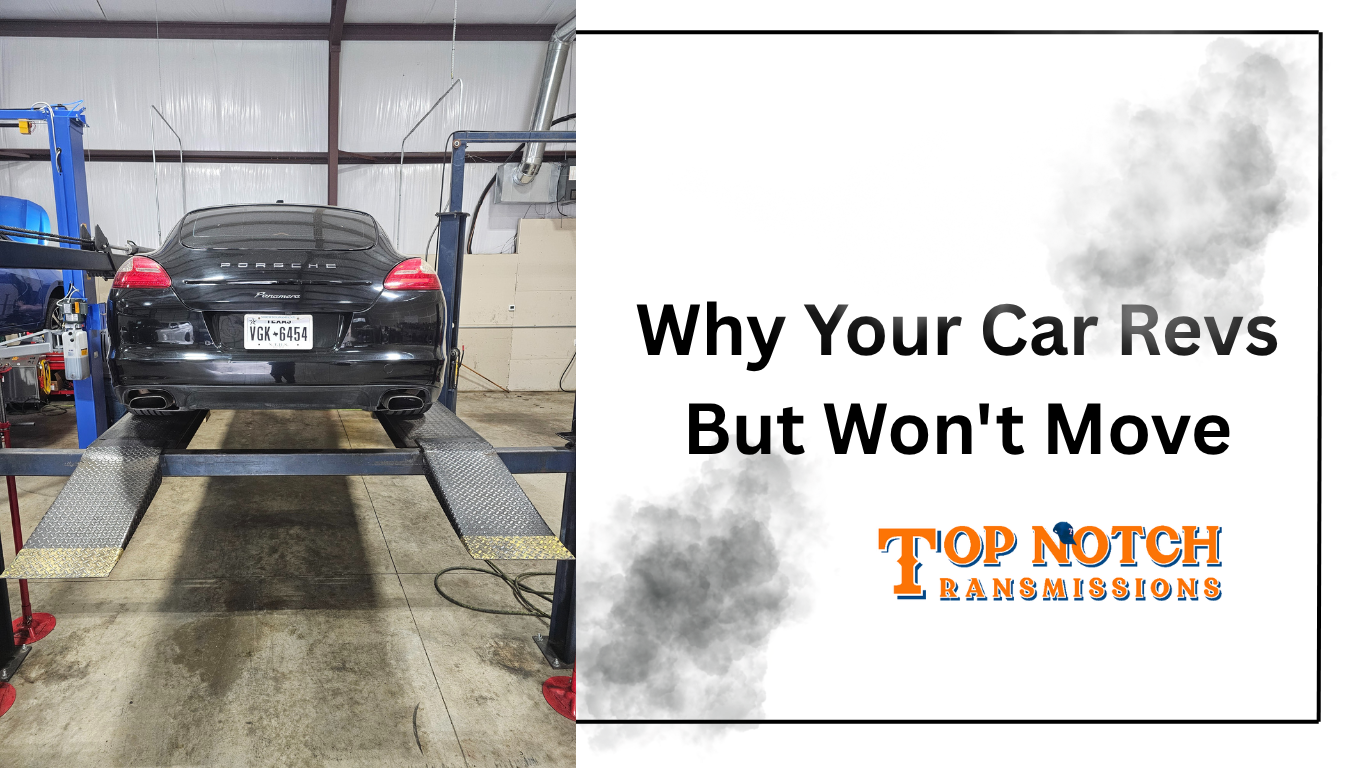
- Give Us A Call (817) 386-7592
- Get Directions
-
Financing Available

It’s one of the most frustrating situations on the road: you press the gas, your engine climbs in RPMs, but your vehicle simply refuses to roll. When your car revs but won’t move, it’s not just annoying — it signals a breakdown in the chain that transfers engine power to the wheels. In this article, we’ll dive into the main causes of this issue (whether you drive an automatic or a manual vehicle), how to start narrowing down the problem, and when it’s time to bring your car to a trusted shop like ours in Fort Worth.
To understand why the engine revs but the car doesn’t move, you need to appreciate how your car’s driveline works. The engine generates power, then the transmission (automatic or manual) engages that power to the driveshaft, which transfers it through axles to the wheels. When any link in this chain breaks — clutch, torque converter, fluid, linkage, or even drivetrain components — the result is engine revving while the wheels stay still.
One of the most common causes, especially in automatic transmissions, is low or burnt transmission fluid, which prevents the hydraulic system from building enough pressure to engage gears. You can learn more about symptoms like this in our article on what causes a burning smell when driving, especially when fluid is overheating or leaking onto hot surfaces.
Here are the most common culprits — each with clues to help diagnose the issue.
1. Slipping or Worn Clutch (Manual Cars)
Over time the friction material on the clutch plate wears out. When you press the gas pedal, the engine revs climb, but the clutch can’t grip properly—so no usable power reaches the wheels. You might notice soft shifts, delayed engagement, or a burning smell during gear changes.
2. Automatic Transmission Fluid Problems
In automatics, fluid creates the pressure needed to engage internal clutch packs and gear sets. If the fluid is low or contaminated, the transmission may slip or refuse to move entirely—even while the engine revs freely. Checking your fluid’s color and level can offer early warning.
3. Failed Torque Converter or Internal Damage
The torque converter acts like a clutch in automatic transmissions. If it fails—or if internal components like clutch packs, bands, or solenoids are damaged—your transmission might no longer transfer engine power effectively. These are signs it might be time for a full transmission replacement.
4. Axle, Driveshaft, or Differential Failure
Even with a perfectly functioning transmission, a broken axle, damaged CV joint, or failed differential can prevent movement. If the driveshaft isn’t connected to the wheels, your engine will rev, but your vehicle won’t go anywhere.
If your car revs but doesn’t move, you can perform a few checks before visiting the shop:
For more details on identifying these issues, this guide from Vehicle Freak offers a helpful breakdown of common causes and how they manifest.
If you’ve ruled out simple fixes and still experience high revs without motion, it’s time to consult a specialist. Many of these problems—slipping clutches, failed torque converters, internal transmission damage—require proper tools, training, and diagnostic skill.
At Top Notch Transmissions, we specialize in accurate transmission diagnosis and repair. Whether your issue stems from worn clutches, hydraulic pressure loss, or failed gears, we can repair or replace your system using high-quality, certified remanufactured transmissions.
If the problem lies in your manual setup, such as a worn clutch or flywheel, we offer standard transmission repairs to restore proper drivability and responsiveness.
When you need real answers about why your car revs but doesn’t move, let our experienced team in Fort Worth help. We combine diagnostic expertise, clear communication, and lasting solutions—so you don’t waste time guessing. Whether it’s a simple clutch fix or a full transmission rebuild, Top Notch Transmissions is ready to get you rolling again. Call us today for an inspection or estimate.
